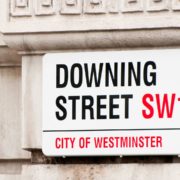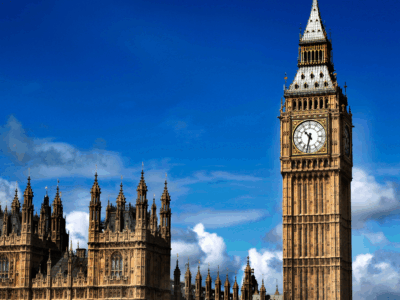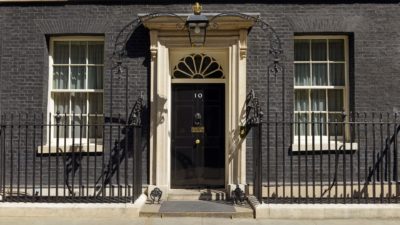June 23rd marks 9 years since the UK voted to leave the EU. In this feature, we examine the impact of the Brexit vote on the property market.
As June 23rd approaches, marking nine years since the UK’s historic vote to leave the European Union, it’s a good time to reflect on how the outcome of the Brexit vote has shaped the nation’s property market.
Before the referendum, predictions of what could happen made the headlines, including a warning from then-Chancellor George Osborne of significant drops in house prices of 10% and an “immediate economic shock” that would halt the UK’s property market growth.
Others suggested that potential decreases in rental costs could result from lower immigration. Concerns also loomed regarding interest rates and the future of new home construction, with fears of rising material costs and a shortage of foreign workers.
However, as the past nine years have unfolded, the UK’s property landscape has navigated a complex path, demonstrating remarkable resilience through unprecedented events, including the recent global pandemic.
This article will take a look at what’s happened to the UK’s property market since the Brexit vote, from house prices and renting trends to interest rates, Stamp Duty, and the crucial aspect of new home construction, and examines the impacts of Brexit on the UK’s property market.
How has Brexit affected the UK’s property market?
House Prices
Cast your mind back to when George Osborne, the Conservative Chancellor of the Exchequer at the time, cautioned that UK house prices could fall by 10% if the country left the European Union and up to 18% compared to remaining in the EU.
However, this prediction didn’t materialise.
In fact, UK average property values have seen a significant increase since June 2016, when they stood at £196,106. The latest Land Registry data for March 2025 shows this figure has climbed to £271,145 over the last nine years.
Source: Land Registry, UK House Price Index
The Cost of Renting
In the lead-up to the EU referendum vote, the National Association of Estate Agents (NAEA) predicted that landlords could see a decrease in rents if voters decide to leave the EU.
At the time, an NAEA report stated: “Lower immigration would mean fewer people looking for accommodation, which would lessen the demand and, potentially, the upward pressures on housing prices, especially in those regions popular with EU migrants.”
However, the cost of renting in the UK has soared significantly since the Brexit vote in June 2016. In June 2016, the average UK rental value (excluding London) was £773pcm, while London’s average stood at £1,575pcm, according to the June 2016 HomeLet Rental Index.
When compared to the May 2025 HomeLet Rental Index (the latest one available at the time of publication), the UK average rent (excluding London) reached £1,124pcm, with London’s average now standing at £2,088pcm.
Since the UK voted to leave the European Union nine years ago, several factors have contributed to the rise in the cost of renting.
With the gap between rental supply and demand widening, partly caused by labour shortages and increased material costs in construction post-Brexit, hindering new home builds, several other factors have contributed to the rise in the cost of renting.
Significant changes in landlord taxation and regulations have prompted some landlords to leave the market, further reducing the availability of rental properties. This reduced supply, coupled with rising interest rates making homeownership less accessible and a general increase in the cost of living, has pushed rental prices higher.
Interest Rates
Following the Brexit vote in June 2016, UK interest rates remained at historically low levels for an extended period, even being cut further to 0.1% during the COVID-19 pandemic. However, this period of ultra-low rates dramatically ended in late 2022. The disastrous “mini-budget” by Liz Truss’s government sent shockwaves through financial markets, causing interest rates to skyrocket as concerns about government borrowing and economic stability intensified.
After peaking, the Bank of England’s base rate has only just begun to come back down, with recent cuts bringing it to 4.25% in May 2025, as inflation starts to ease.
Stamp Duty
Since June 2016, UK Stamp Duty Land Tax (SDLT) has undergone several significant changes including rate reductions for first-time buyers and Stamp Duty holidays.
Before the Brexit vote, a major shift for landlords and property investors came into play in April 2016 with the introduction of a 3% surcharge on top of the standard SDLT rates for those purchasing additional residential properties, including Buy-to-Let investments and second homes. This surcharge was increased to 5% from October 31st, 2024, making it even more expensive to acquire Buy-to-Let properties.
Follow the link to read our 2025 Stamp Duty Tax Guide.
Construction of New Homes
In the run-up to the Brexit vote, there were warning signs that the UK’s departure from the European Union could jeopardise the government’s ambitious plans to deliver new housing across the country.
These concerns specifically highlighted that the cost of building property would likely increase due to greater restrictions on foreign workers in the UK, leading to labour shortages, as well as a rise in the cost of importing materials.
Since the UK left the EU, the cost of labour and building materials has increased. The COVID-19 pandemic, which disrupted global supply chains and led to a surge in the cost of construction materials, added significant challenges to the UK’s construction sector.
The graph below highlights newly built dwellings completed by final tenure and the number of units whose final tenure is either Housing Association or Local Authorities having been provided under Section 106 (nil grant) agreements, England, 2011-12 to 2023-24.
Source: Ministry of Housing, Communities & Local Government.
Despite the challenges posed by increased construction costs since the UK left the EU, the volume of new dwellings delivered across England has slowly increased. However, whether it is enough to address the country’s housing deficit is yet to be seen.
While the COVID-19 pandemic presented a significant, albeit temporary, disruption to supply chains and on-site work, the volume of new housing being delivered is on the rise.
UK Property Market Continues to Showcase its Resilience
In the nine years since the Brits took to the polling stations and voted to leave the EU, the nation has seen a lot in the way of uncertainty. Not just because of Brexit, but several unprecedented events that have caused economic turbulence. For the property market, it’s mostly been a return to stability and growth, with property prices and other important metrics performing better than might have been expected.
While Brexit has certainly presented new challenges over the past 9 years, property investors who held their nerve and made the right moves in the property sector have been in a position to achieve steady returns since the EU referendum vote.
Staying informed at events like the National Landlord Investment Show is crucial for up-to-date expert-based education and knowledge on the UK Property Market and its correlation with politics. Register for your free ticket and check out the upcoming live shows here.























Comments